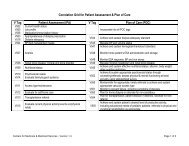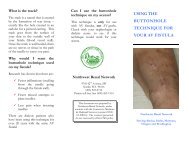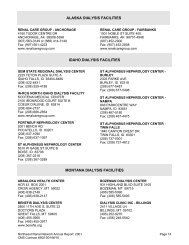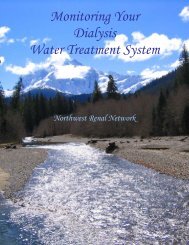Medicare's "You Can Live: Your Guide For Living With Kidney Failure"
Medicare's "You Can Live: Your Guide For Living With Kidney Failure"
Medicare's "You Can Live: Your Guide For Living With Kidney Failure"
- No tags were found...
Create successful ePaper yourself
Turn your PDF publications into a flip-book with our unique Google optimized e-Paper software.
There are three kinds of access—Fistula, Graft, and Catheter.“There are threekinds of access—Fistula, Graft, andCatheter.”• A fistula or arteriovenous fistula (AVF) surgically connects anartery and a vein. A fistula needs weeks to months to heal and“mature” before it can be used. When a fistula matures, itbecomes larger and stronger and better for dialysis. It’sconsidered the best access because it lasts longer, has fewerproblems, gives better hemodialysis results, and can lower therisk of infection. <strong>With</strong> a fistula, you can improve your qualityof life and length of life. A fistula isn’t right for everyone, butyou should be evaluated for a fistula, and given one if it’s thebest access for you. It’s best to get a fistula before you needdialysis so that it can be ready for use when you need it.• A graft or arteriovenous graft (AVG) uses special tubing tosurgically connect an artery and vein. A graft needs lesshealing time than a fistula. However, a graft must bereplaced every so often.• A catheter makes a temporary access by inserting a soft,flexible tube into a vein in the neck, chest, or groin. Acatheter can be used as soon as it’s in place.Fistula Access Cross-Section<strong>For</strong> each hemodialysis treatment, two needles are put into youraccess. Each needle is connected to a plastic tube. One line takesthe blood with wastes out of your body. The other tube carriesthe clean blood back into your body.8











